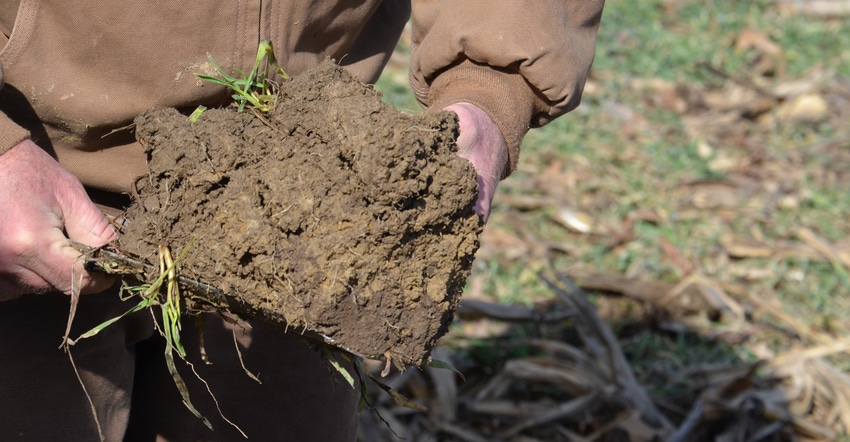March 9, 2018

By Don Donovan
As a district conservationist with the Natural Resources Conservation Service, I have toured farms, attended conferences and talked to farmers throughout the country about conservation farming, no-till, cover crops and soil health. I have overheard snippets of wisdom here and there. They are little pieces of advice that may help make your soil health journey transition a little smoother.
A farmer in South Dakota told me, “Vertical tillage is the worst machine I have ever seen.” That is his opinion. He also said, “Our biggest limitation in our current cropping systems is the lack of carbon.”
Many early no-till pioneers in Indiana talked about the need to get more carbon into the system.
Here is one more piece of advice from my South Dakota friend: “Keys to weed control include competition, sanitation and rotation.”
A Canadian farmer at the National No-till Conference this year used a phrase that has stuck with me: “Grain for man, straw for the land.”
More advice
Then there is wisdom from a no-till and cover crop farmer who uses livestock in his system in Coffee County, Tenn. He provided several quotes at the National No-till Conference that are worthy of repeating:
• “The four steps to conservation cropping are faith, hope, understanding, commitment.”
• “Let one success drive your decisions, rather than one failure.”
• “Is there peer pressure in farming? You bet there is.”
• “Chemical properties and physical properties together are just dirt. Biological properties make it soil.”
• Perhaps his best line: “Don’t just conserve a degraded resource; we need to rejuvenate and regenerate.”
Wisdom in books
I’ve also found several books that can help you on your soil health journey.
“Plowman’s Folly” — Written in 1943 by Edward Faulkner, it talks about the unnecessary use of the moldboard plow when it was the primary tillage implement.
“Big Hugh” — This is the story of Hugh Hammond Bennett, father of conservation in the U.S., and his fight to stop erosion during the Dust Bowl. It discusses the beginning of soil and water conservation districts and grassroots solutions to helping farmers on their land.
“Dirt: The Erosion of Civilizations” — By David Montgomery, this book chronicles how erosion has impacted the rise and fall of civilizations. It’s a look back in time, and at what we don’t want to see happen in the U.S.
“Growing a Revolution: Bringing our Soil Back to Life” — This is the story of the current soil health movement as farmers implement regenerative soil systems, also by David Montgomery. It’s a look forward at the soil regeneration movement, which is moving like an avalanche down a mountain, picking up speed as more farmers join the revolution.
Like many others on this soil health journey, I find the more I learn, the more I really don’t know. The soil health journey is a long trip, taken one step at time, moving forward and looking back only long enough to know you don’t want to go back. The target is healthy, regenerated soils producing healthy food. Today is the day to start your journey toward regenerated soils on your farm. Take that first step, however small it might be!
Donovan is a district conservationist in Indiana with the Natural Resources Conservation Service. He is a contributor to the Salute Soil Health column and submits other articles on behalf of the Indiana Conservation Partnership.
You May Also Like




